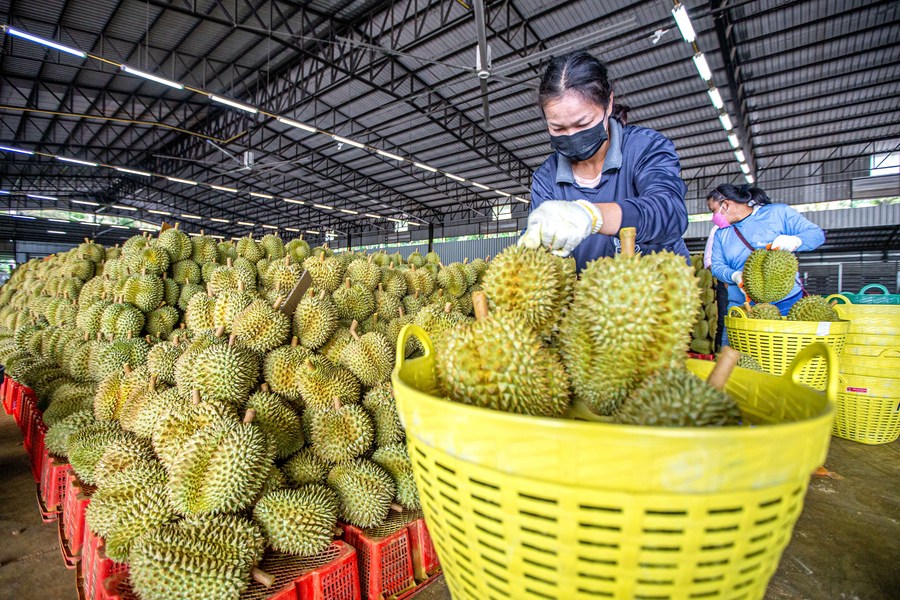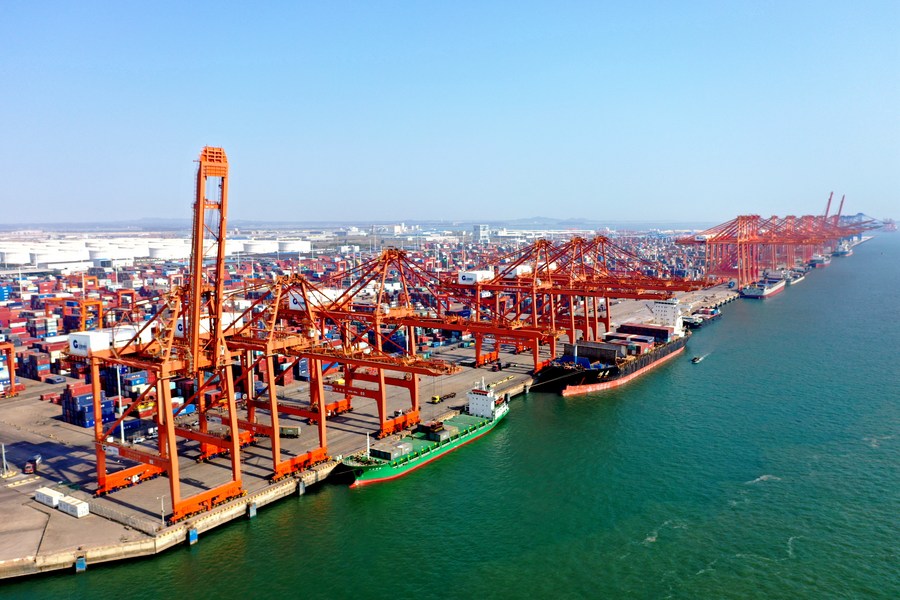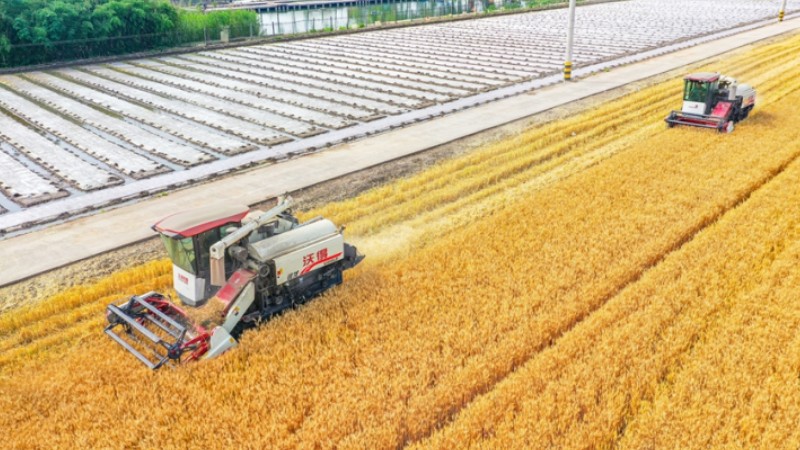World's biggest trade deal takes effect for all members, boosting regional economic integration
BEIJING, June 2 (Xinhua) -- The Regional Comprehensive Economic Partnership (RCEP) agreement came into force in the Philippines on Friday, meaning the world's largest free trade pact is now in effect for all its 15 members.
The full implementation of the RCEP is a new stage for the trade bloc with the world's largest population and trade volume as well as the greatest development potential, said China's commerce ministry.
It reflects the determination and actions of its 15 members -- 10 Association of Southeast Asian Nations member states, China, Japan, the Republic of Korea, Australia and New Zealand -- to support an open, free, fair, inclusive and rules-based multilateral trading system, the ministry said.
Signed in November 2020 after eight years of negotiations, the landmark RCEP agreement covers roughly 30 percent of the world's gross domestic product and population. It entered into force on Jan. 1, 2022, with the aim of gradually eliminating tariffs on over 90 percent of goods traded among its members.

The signing ceremony of the Regional Comprehensive Economic Partnership (RCEP) agreement is held via video conference in Hanoi, Vietnam, Nov. 15, 2020. (VNA via Xinhua)
The full implementation will inject strong momentum into regional economic integration, comprehensively enhance the levels of trade and investment liberalization and facilitation in East Asia, and contribute to the long-term stable development of the regional and global economies, according to the commerce ministry.
Philippine Trade and Industry Secretary Alfredo Pascual described the RCEP agreement as "a modern, comprehensive, high-quality and mutually beneficial economic partnership."
"We see RCEP as a critical key toward inclusive economic growth, not only for the Philippines but within ASEAN," he said in a statement released on Thursday, prior to the Philippines' ratification of the pact.
INITIAL FRUITS
Since the trade pact came into force last year, goods trade ties among RCEP members have become closer, and intra-regional trade is now a key force in stabilizing and boosting the foreign trade of RCEP members, China's commerce ministry noted.
In 2022, trade between China and other RCEP members increased 7.5 percent year on year to 12.95 trillion yuan (about 1.82 trillion U.S. dollars), and RCEP investment in China, in actual use, climbed 23.1 percent to 23.53 billion U.S. dollars, data shows.
Booming foreign trade has also been reported in other member countries. Thailand's trade with other RCEP members rose 7.11 percent year on year to 300 billion U.S. dollars last year. In the first four months of 2023, Cambodia's exports to RCEP countries surged 16 percent year on year.

A worker arranges durians at a durian processing factory in the Chanthaburi province, Thailand, May 5, 2022. (Xinhua/Wang Teng)
The RCEP region has continued to be a hot spot for global investment, with most members showing upward trends in their utilization of foreign investment, according to China's commerce ministry.
Gu Qingyang, an associate professor at the National University of Singapore's Lee Kuan Yew School of Public Policy, told Xinhua that the vibrant dynamism of the region is also a strong attraction for economies outside the region, which is witnessing increasing non-RCEP investment.
Amid declining global openness and rising trade costs, the RCEP is helping to promote opening-up and cooperation in the region and beyond, and is contributing to global economic development, said Rebeca Grynspan, secretary-general of the United Nations Conference on Trade and Development.
HIGHER-STANDARD OPENING-UP
Opening-up commitments, together with high-standard rules in various fields, will greatly facilitate free flows of production factors like raw materials, goods, technologies, human resources, capital, information and data within the region, the commerce ministry said.
With the full implementation of the deal, the ministry expects a more prosperous integrated regional market to form gradually, and broader, higher-standard and deeper cooperation to be achieved among member countries.
It also hopes that the full implementation of RCEP will give China a strong boost to pursue high-standard opening-up by creating more favorable conditions for the expansion of trade in goods with RCEP members, further opening trade in services and investment, and improving trade facilitation and the business environment.

This aerial photo taken on Feb. 23, 2023 shows the Qinzhou Port in south China's Guangxi Zhuang Autonomous Region. (Xinhua)
Bi Haijun, an official of Qingdao Customs in east China, said the RCEP agreement has not only eased enterprises' access to free trade benefits, but also integrated regional industrial and supply chains, which will facilitate the high-quality development of intra-regional trade.
Local governments in China have also taken the opportunity of the implementation to build a first-class business environment, making continuous efforts to attract industries, capital and human resources, according to the commerce ministry.
As the trade pact is now in full force, China will continue to guide local governments, industries and enterprises to ensure the solid implementation of the RCEP, provide improved public services, and create conditions for them to engage further in the RCEP market, the ministry said.
China will also work with other parties to fulfill its obligations, strengthen the RCEP mechanism, enhance the overall implementation of the agreement, and provide a strong guarantee for the steady development of RCEP cooperation, the ministry pledged.
Photos
Related Stories
Copyright © 2023 People's Daily Online. All Rights Reserved.









